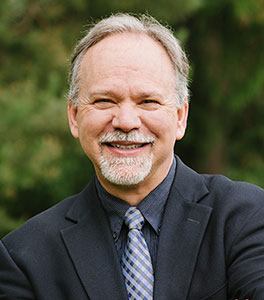Dr. Paul W. Chilcote
Perpetua: Called to Costly Discipleship. Dietrich Bonhoeffer coined the term “costly discipleship” in the 20th century, but women lived this calling as early as the first century, like Perpetua, martyred for their faith in Christ. A document entitled The Passion of Perpetua, Felicity, and their Companions is one of earliest and most noteworthy Christian texts outside the Bible. It purports to include Perpetua’s diary, written in prison while she and her companions awaited execution in Carthage, a document similar in many ways to the prison letters of Bonhoeffer. She contemplates the sacrifice she would undoubtedly be called to make because of her unswerving allegiance to Christ.
A woman in her early 20s, she was nursing her infant child at the time. Her friend and companion, Felicity, who would die at her side, was pregnant. In the early church, Perpetua became a symbol of true Christian discipleship in the midst of persecution and suffering. In waves of persecution that shook the foundations of the church later under the Emperors Decius and Diocletian, her story inspired the sacrifice and steadfast faith of many. It continues to inspire costly discipleship today among North African Christians in particular.
Hildegard of Bingen: Called to Visionary Leadership. The medieval church produced a wide range of women whose influences reaches into the contemporary world to this day. None stands out in my mind more than Hildegard of Bingen, 12th century Benedictine Abbess and sage. Her achievements would astound any person today. As far as she knew, no woman had ever written before, so she devoted herself to literacy. She produced a massive trilogy that combines Christian doctrine and ethics in an integrative fashion. Known far and wide as one of the greatest healers of her day, she compiled an encyclopedia of medicine and natural science. She wrote the first known morality play of the Middle Ages, a template reproduced many times over by other medieval male authors. Not the least of her many accomplishments was a body of exquisite music that includes seventy songs for use in Christian liturgy. Rediscovered on the occasion of her 900th birthday in 1998, some of the contemporary recordings of these compositions flew to the top of the charts in North America and Europe. Like many of the women of her age, she received visions from God. Over the course of ten years, she recorded, interpreted, and lavishly illustrated twenty-six visions, in particular, that form the substance of her most important religious work, Scivias. Abbess, author, and artist, theologian, doctor, and musician, Hildegard provided visionary leadership in an age of unprecedented faith.
Paul W. Chilcote, PhD is Academic Dean; Professor of Historical Theology and Wesleyan Studies at Ashland Theological Seminary. You can contact him at pchilcote@ashland.edu
